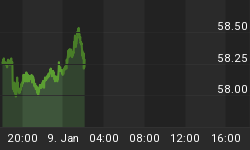As the U.S.-led Afghan campaign lurches into its second decade, the country's vast untapped mineralogical resources are again emerging in the Western media, seemingly underpinning the benefits of International Security Assistance Force troops "staying the course" and defeating the insurgency, after which these resources can be tapped, both providing the administration of Afghan President Hamid Karzai with a source beyond drugs for reconstruction and Western companies who develop the reserves a handsome profit.
The latest discovery is that Afghanistan is rich in rare earth elements (RREs). China currently has a near monopoly on the global production of RREs, and the price for a ton of unprocessed ore has soared to a dizzying $100,000 a ton.
So, what's wrong with this picture?
Western venture capitalists should consider the following points before whipping out their checkbooks to underwrite any mining projects.
First and most obvious, Afghanistan has been in a civil war for thirty years, with Western forces intervening only in the last decade. The country is torn by tribalism and religious divides and Karzai's administrative control is largely limited to the larger cities. Mao Tse Tung in his 1947 work "The Present Situation and Our Tasks" wrote, "Concerning attacking cities, resolutely seize all enemy fortified points and cities that are weakly defended. At opportune moments, seize all enemy fortified points and cities defended with moderate strength, provided circumstances permit. As for all strongly defended enemy fortified points and cities, wait until conditions are ripe and then take them," a strategy the Taliban are apparently following to the letter, unconcerned with election cycles and opinion polls. The Taliban know that they have time on their side - as one Taliban commander told a U.S. military officer, "you have the watches, we have the time."
Secondly, the administration of Karzai is increasingly viewed by the Afghan population as illegitimate, foisted on them by foreign forces, and extremely corrupt to boot. During the August 2009 presidential election, Karzai, in an election reported by foreign observers as riven with fraud, received less than 50 percent of the popular vote, triggering a runoff. Two months later, after Karzai agreed to a runoff election, tentatively scheduled for 7 November, but five days later his main opponent Abdullah Abdullah withdrew and Afghan officials canceled the election, leaving Karzai in power for a second term, despite the provisions of the Afghan constitution, alienating many Afghans from democratic principles.
Third, Afghanistan's rich mineral base has been known for a long time. Following disastrous December 1979 Soviet invasion, extensive Soviet exploration in Afghanistan produced detailed geological maps and reports that listed more than 1,400 mineral outcroppings, along with about 70 commercially viable deposits. The USSR subsequently committed more than $650 million for resource exploration and development in Afghanistan, which included a smelting complex for the Ainak deposit that was to have produced 1.5 million tons of copper per year. In the wake of the Soviet withdrawal a subsequent World Bank analysis projected that the Ainak copper production alone could eventually capture as much as 2 percent of the annual world market. Afghanistan's Hajigak iron deposit, in the Hindu Kush mountain range west of Kabul, is assessed as one of the largest high-grade deposits in the world.
As for the recent announcement about gigantic deposits of rare-earth metals, including lanthanum, cerium and neodymium, being discovered in Afghanistan, it is worth bearing in mind that the U.S. geologists who surveyed the sites were airlifted by Black Hawk helicopters to the Khan Neshin Village in a desert area of Helmand Province, where they worked under military protection. If such deposits are to be developed, then given the lack of security forcing geologists to be airlifted to the site, then how is the mining infrastructure to be conveyed?
Fourthly, the stupendous rise in RRE ore prices has led to a frenzied search for deposits around the world, from Estonia to Mongolia, some of which will doubtless pan out. Given Afghanistan's instability, why would an investor risk his capital there, especially when neighboring Central Asian nations like Mongolia represent a far more stable and investor-friendly environment? Mongolia recently signed off on a massive $7 billion mining project, allowing Rio Tinto and Ivanhoe Mines a majority 67 percent share.
While Afghanistan's mineralogical potential is vast, the country's crippling economic and insurgency problems remain, and it's worth nothing here that despite the 2010 joint report by the Pentagon, the U.S. Geological Survey and U.S. Agency for International Development that Afghanistan possesses "previously unknown" and untapped mineral reserves worth up to $1 trillion, two-thirds of Afghanistan's population live on less than $2 a day.
So, even though Afghan Ministry of Mines adviser Jalil Jumriany said of the RRE discoveries, "This will become the backbone of the Afghan economy," the question, not only for foreign investors but the Afghans themselves remains, "qui bono?"
There are no clear answers emerging to this question from Kabul anytime soon.
By. John C.K. Daly of Oil Price
















